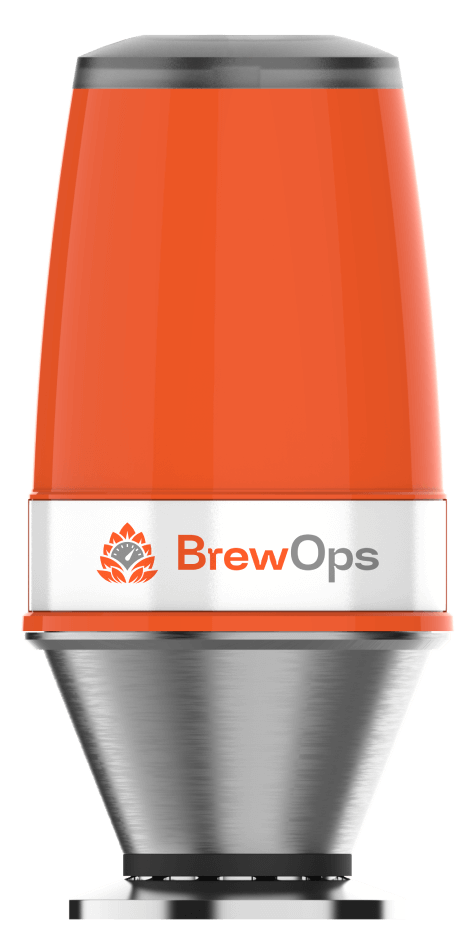Cleaning-in-place (CIP) is a crucial process in the brewery industry to maintain hygiene and ensure product quality by effectively cleaning and sanitizing equipment and pipelines. Both manual and automated CIP procedures are commonly employed, each with its advantages and processes. Breweries choose CIP procedures based on their scale, equipment, and resource availability, often utilizing a combination of manual and automated methods to maintain a high level of hygiene and product quality.
The process for each typically is as follows:
Manual CIP Procedures
- Pre-rinse: Cold water is used to remove any residual product and debris.
- Alkaline Cleaning: A warm alkaline solution is circulated to remove organic materials such as proteins, sugars, and fats.
- Rinse: The system is rinsed thoroughly to remove alkaline residues.
- Acid Cleaning: An acid solution is circulated to remove mineral deposits and scale.
- Final Rinse: Hot water is used to rinse and ensure all chemicals are removed.
- Sanitization: A sanitizing solution is circulated to kill remaining microorganisms.
Automated CIP Procedures
Automated CIP systems use pumps, tanks, valves, and sensors to control the CIP process without manual intervention. Here’s a generalized automated CIP process:
- Pre-rinse: Cold water is used to flush and remove loose residues.
- Alkaline Cleaning: A mixture of water and alkaline detergent is circulated through the system at a controlled temperature and time.
- Intermediate Rinse: Water is circulated to remove alkaline residues.
- Acid Cleaning: An acid solution is circulated to remove mineral deposits and scale.
- Final Rinse: Water is circulated to remove the acid and ensure the system is clean.
- Sanitization: A sanitizing solution, often an iodine or chlorine-based compound, is circulated to kill any remaining microorganisms.
Considerations
- Chemical Selection: Proper selection of cleaning agents is critical to ensure effective cleaning without damaging equipment.
- Water Quality: The quality of water used in CIP affects the efficiency of the cleaning process.
- Validation: Validation and verification of the CIP process are essential to ensure it meets industry standards and regulatory requirements.
Comparing and Contrasting Manual and Automated CIP for Breweries
Now let’s compare and contrast manual and automated CIP processes.
Manual CIP
Human Involvement
Pros: Involves direct control and intervention from operators, allowing for adaptability and adjustments based on real-time conditions.
Cons: Prone to human error, variations in procedures, and inconsistencies in cleaning outcomes.
Labor-Intensive
Pros: Initial setup costs are typically lower as it primarily involves manual labor.
Cons: Labor-intensive, requiring skilled operators, and can be time-consuming, especially for large-scale operations.
Chemical Handling
Pros: Operators have control over chemical measurements and application.
Cons: Risk of improper chemical handling, incorrect concentrations, and inconsistent chemical usage leading to inadequate cleaning; increased safety risk for operator physically handling chemicals.
Monitoring and Verification
Pros: Allows for direct observation and immediate adjustments during the cleaning process.
Cons: Limited ability to provide accurate and real-time monitoring, making it challenging to validate the cleaning effectiveness.
Automated CIP
Consistency and Precision
Pros: Ensures standardized, consistent, and thorough cleaning processes, reducing variability and enhancing overall quality.
Cons: Initial setup costs can be higher due to investment in automation technology and system integration.
Efficiency and Time Saving
Pros: Faster and more efficient cleaning cycles, reducing downtime and allowing for increased production.
Cons: Initial investment may require a significant capital outlay, potentially challenging for small-scale breweries; though over time, it more than pays for itself in efficiencies and resource conservation.
Chemical Precision
Pros: Precise chemical dispensing and management, ensuring optimal concentrations and reducing chemical wastage.
Cons: Requires calibration oversight and maintenance of automated systems to maintain accuracy.
Water Conservation
Pros: Efficient water usage through controlled flow rates and optimized rinsing, contributing to water conservation efforts.
Cons: Upfront investment may be needed for integrating water-saving technologies; within a short timetable, however, cost is reconciled.
Real-Time Monitoring and Adjustments
Pros: Provides real-time data and the ability to make immediate adjustments for optimal cleaning outcomes.
Cons: Dependency on technology; breakdowns can disrupt the cleaning process.
Why Automated CIP Is the Better Choice
Automated CIP in breweries is increasingly becoming the preferred choice due to its ability to provide a consistently high level of cleanliness and operational efficiency while prioritizing safety and sustainability in the brewing industry.
Quality: Automated CIP ensures consistent and standardized cleaning processes, enhancing the quality and safety of the final product.
Consistency: Automated systems provide more consistent cleaning due to precise control of parameters such as temperature, flow rates, and chemical concentrations. Automated CIP systems ensure a consistent and standardized cleaning process every time.
Efficiency and Productivity: Automated systems can be programmed for optimized cleaning cycles, saving time and resources, hence they are more efficient—reducing cleaning time and increasing production—ultimately leading to cost savings and higher throughput.
Thorough Cleaning: Automated systems can reach and clean areas that may be difficult or time-consuming for manual cleaning, ensuring a more thorough and effective cleaning process. This is particularly important for complex brewery equipment with intricate parts.
Time Savings: Automated CIP systems can clean brewing equipment faster and more efficiently than manual methods. The automated process can be optimized for speed and can run unattended, saving labor time and allowing staff to focus on other critical tasks.
Resource Optimization: Automated systems optimize the use of resources such as water and chemicals, leading to cost efficiency and sustainable operations.
Optimized Chemical Usage: Automated systems can accurately measure and dispense cleaning chemicals, optimizing their usage. This reduces waste and helps control costs associated with purchasing and handling cleaning agents.
Reduced Water Consumption: Automated CIP systems are designed to use water efficiently by precisely controlling rinse cycles and water flow rates. This leads to significant water savings compared to manual cleaning processes.
Remote Monitoring and Control: Automated CIP systems can be monitored and controlled remotely, providing real-time insights into the cleaning process. Any issues or deviations from set parameters can be addressed promptly, ensuring the cleaning process remains on track.
Monitoring and Reporting: Automated systems often have monitoring capabilities, often with data logging capabilities, allowing for detailed records of cleaning cycles. allowing for better record-keeping and compliance with regulations.
Compliance and Accuracy: Automated CIP provides accurate chemical measurements, adherence to CIP protocols, and robust documentation, aiding in increased CIP compliance with industry standards and regulatory requirements.
Long-Term Cost Savings: While the initial investment is higher, automated CIP leads to long-term cost savings through reduced labor, lower resource consumption, and minimized errors.
Improved Safety: Automation enhances worker safety by minimizing direct exposure to potentially hazardous cleaning agents. Staff don’t need to handle chemicals directly, reducing the risk of accidents and exposure-related health issues.
Energy Savings: Automated CIP systems can be programmed to operate during off-peak hours or when energy costs are lower, optimizing energy consumption and reducing operational expenses.
Automated CIP in breweries offers consistent cleaning, enhanced efficiency, water usage reduction and resource optimization, compliance assurance, and long-term cost benefits, making it a superior choice over manual CIP.
BrewOps Rinse Monitoring
BrewOps aids brewers in automating their brewing procedures, resulting in cost savings and the assurance of high-quality products. The dedicated BrewOps Rinse is one application available in the BrewOps family of products that will help brewers with cleaning in place efficiencies—along with a new product soon to be released, so stay in touch to learn more about it!
Breweries rely on this comprehensive brewing operations management software, which facilitates real-time monitoring, accessible dashboards, alerts, historical data analysis, remote oversight, data integration and analysis, as well as reporting and documentation. Designed for mobile usage, BrewOps offers portable, battery-powered devices that enable wireless monitoring of essential brewing processes, providing immediate supervision and dependable real-time data.
How BrewOps Rinse Help Optimize Your Cleaning-in-Place
For craft brewery cleaning in place best practices, BrewOps Rinse has you covered. BrewOps rinse offers several benefits to your brewing operations for brewery cleaning, whether involved with brewery sanitation or brewing equipment cleaning.
BrewOps Rinse helps operators conserve water by alerting you when the water leaving the tank is clean, so that you can stop wasting fresh water. Breweries use different cleaning chemicals, and BrewOps Rinse also it lets you know if your chemical usage is correct in terms of concentration and consistency between cleanings of tanks. The conductivity rises by different amounts based on whether it is a caustic or an acid-based cleaner. Each cleaning cycle should be relatively the same, so if you see a substantial spike—you will know you used too much, or if it was very low, you did not use enough.
BrewOps Rinse can also be used measuring in/out of heat exchangers. This will determine temperature changes, and also determine leaks based on changing conductivity.
At a glance, BrewOps Rinse helps you:
- Significantly reduce water consumption
- Shorten CIP rinse times, saving money
- Increase operator and product safety
- Increase sustainability
- Adhere to CIP compliance
Efficiency, safety, increased CIP compliance, water reduction, and real-time monitoring are only some of the streamlined benefits that BrewOps Rinse provide you for you cleaning-in-place processes for your craft brewery. BrewOps Rinse is your reliable solution for optimizing the cleaning-in-place procedures in your brewery. And remember to ask us about our upcoming new product release that also helps optimize your clean-in-place processes!


